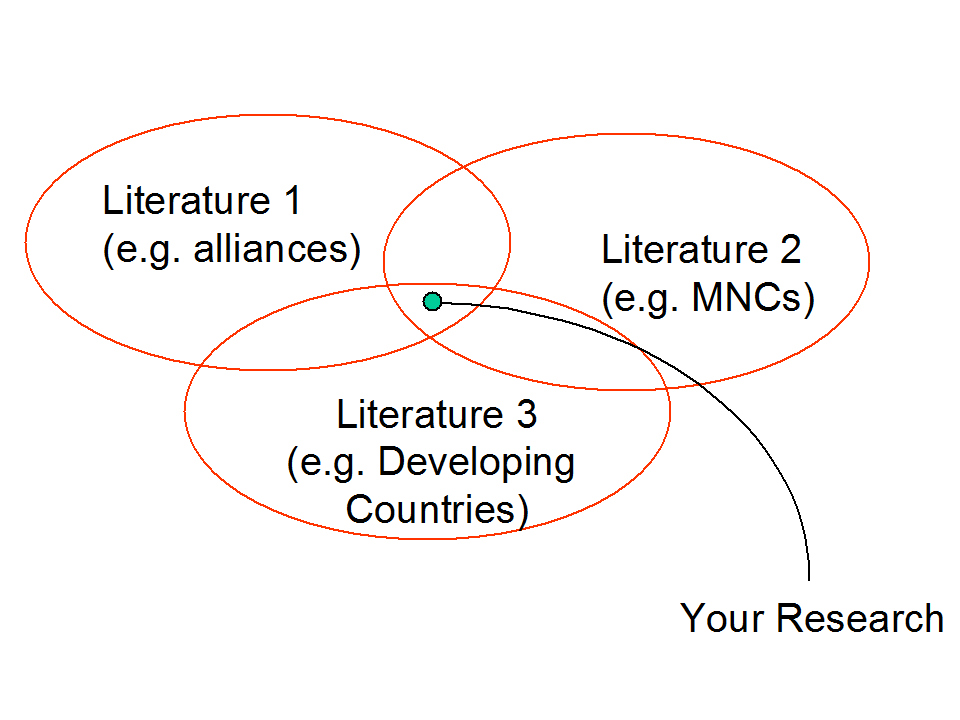Each review of the literature will be different, because it is dependent on the very particular kind of conversation which you plan to have. Selecting conversants and being clear about your relationship with them is an important step in focusing down your research. However it is one that is often easier said than done, and therefore requires some level of initial scoping to be clear as to where these conversants might be found. The technique of mapping is one useful way in which you can begin to scope your research and become clearer about its boundaries.
Figure 3 shows a simple map to
represent the positioning of a research study. Here the research is
at
the interface between three areas of literature, or knowledge
domains.
Each of them is distinct and yet together they provide a focus for
an
area of study. For example, a study on the formation of alliances
involving Multi-National Companies (MNCs) in developing countries,
would
have literature domains relating to alliances, MNCs and developing
countries.
Figure 3: Mapping your field

There are a number of issues which arise from this kind of map. First, it clearly defines particular domains which are relevant to the research, but perhaps more importantly it also defines those areas which are not relevant to your particular interest within the domains. For example, there is a lot of research in developing countries concerning the provision of aid and sustainability of aid. These issues are not specifically relevant to this research study, and therefore the study would particularly focus on the areas of overlap between developing countries and MNCs and developing counties and alliances. Immediately we start to use a more focused basis for exploring the relevant areas of literature.
The text on this page is reproduced with permission from Professor Mark Jenkins, Cranfield School of Management. The ideas are based on teaching sessions with PhD and DBA students at Cranfield School of Management, and draw from ideas on writing developed by Anne Huff.
|
|
|


